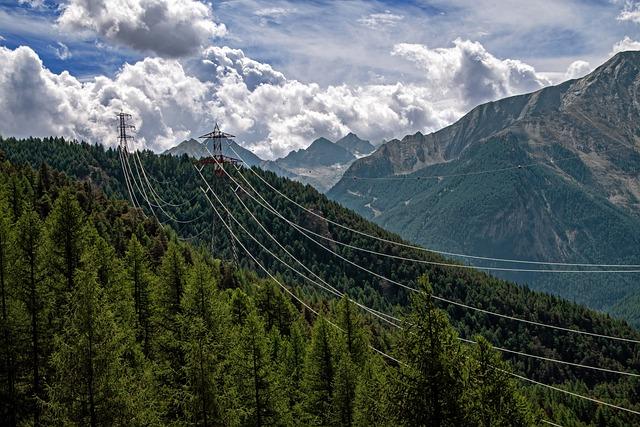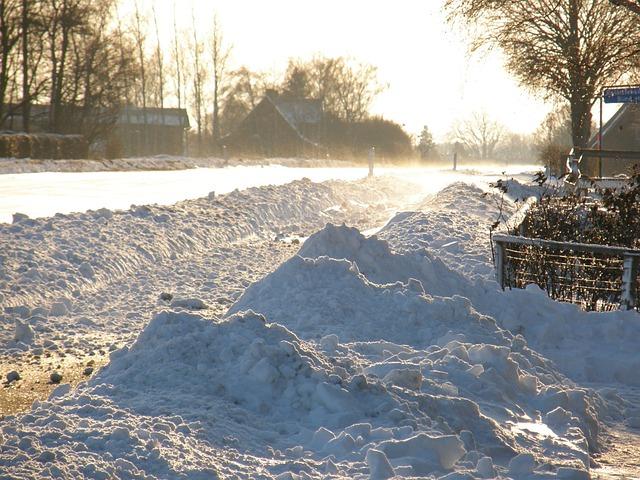Trees play a vital role in the process of carbon sequestration, helping to mitigate greenhouse gas emissions and combat climate change. Urban trees, in particular, have been recognized for their ability to absorb and store carbon from the atmosphere, contributing to a greener environment[[1]. Forests also play a significant role in storing carbon, influencing the carbon cycle and offering numerous environmental benefits [[2]. Through visualization and bibliometric analysis, researchers have gained valuable insights into the research advancements surrounding carbon neutrality and the crucial role that trees and forests play in this context[[3]. By exploring the impact of different tree species and understanding their contribution to carbon sequestration, we can further appreciate the importance of trees in the fight against climate change.
Table of Contents
- Benefits of Trees in Carbon Sequestration
- Factors Affecting Trees’ Ability to Capture Carbon
- Best Practices for Maximizing Carbon Sequestration by Trees
- Importance of Protecting and Preserving Tree Ecosystems
- Collaborative Efforts to Enhance Tree-Based Carbon Sequestration Technology
- Q&A
- Conclusion
Benefits of Trees in Carbon Sequestration
Forests play a crucial role in carbon sequestration, helping to mitigate the impacts of climate change. Trees act as heroes in the fight against carbon emissions, storing carbon dioxide while also providing a strong, lasting product when used as additives in concrete [1]. In fact, forests have been found to store more carbon dioxide than they release, with about 30 percent of carbon emissions from burning being absorbed by city trees and soil [2]. This process helps to improve air quality and reduce the overall concentration of greenhouse gases in the atmosphere.
Trees sequester carbon mainly in their structure and in the soil through the process of photosynthesis. As trees grow, they pull carbon from the atmosphere, converting it into biomass that is stored within their trunks, branches, and roots [3]. This carbon storage helps to offset human activities that release carbon dioxide into the atmosphere, making trees a vital component of carbon sequestration efforts.
Factors Affecting Trees’ Ability to Capture Carbon
When it comes to the crucial role trees play in carbon sequestration, various factors influence their ability to capture and store carbon effectively. Understanding these factors is essential for maximizing the environmental benefits provided by forests.
- Tree Species: Different tree species have varying capacities for carbon sequestration. Some species, like oak or pine, are known to be more efficient at capturing carbon compared to others.
- Tree Age: Generally, older trees tend to sequester more carbon as they have had more time to grow and accumulate biomass, storing carbon in their trunks, branches, and roots.
- Forest Density: The density of trees in a forest area can impact carbon sequestration rates. Dense forests with a high number of trees per area can sequester more carbon than sparse forests.
Additionally, environmental conditions such as soil quality, climate, and sunlight exposure also play a significant role in determining how effectively trees can capture and store carbon. By considering these factors, conservation efforts and forest management strategies can be tailored to optimize carbon sequestration benefits from trees.
Best Practices for Maximizing Carbon Sequestration by Trees
When it comes to maximizing carbon sequestration through trees, there are several best practices to consider. Firstly, managing a mixed-age forest with relatively young trees can significantly increase carbon sequestration, with an optimal carbon stocking of around 30 tonnes per year[1]. Additionally, incorporating trees into agricultural landscapes through agroforestry practices can play a vital role in sequestering carbon[2].
One effective way to enhance CO2 sequestration is to sustainably harvest mature trees for long-lived wood products, which aids in maximizing carbon sequestration in forests[3]. By strategically managing forests and incorporating trees into agricultural settings, individuals and communities can make a significant impact on carbon sequestration, contributing to a greener future for our planet.
Importance of Protecting and Preserving Tree Ecosystems
In the realm of environmental conservation, the intricate relationship between trees and carbon sequestration plays a vital role in mitigating climate change. Trees act as natural carbon sinks, effectively absorbing carbon dioxide from the atmosphere and storing it within their structure, thereby helping to reduce greenhouse gas levels. This process aids in combating the adverse effects of global warming and serves as a powerful climate solution [1].
By safeguarding and maintaining tree ecosystems, we can significantly contribute to the preservation of our planet’s biodiversity and overall ecological balance. Forests are essential habitats for a myriad of flora and fauna, providing crucial shelter, food sources, and nesting grounds for various species. Additionally, forests help to regulate local climates, prevent soil erosion, and enhance water quality, further underscoring their multifaceted importance [2].
Efforts to support tree planting initiatives and sustainable forest management practices are instrumental in fortifying the resilience of ecosystems and fostering a healthier environment for current and future generations. By recognizing the pivotal role that trees play in carbon sequestration, we can champion conservation efforts that safeguard these invaluable natural resources for the well-being of our planet [3].
Collaborative Efforts to Enhance Tree-Based Carbon Sequestration Technology
Collaborative efforts play a crucial role in enhancing tree-based carbon sequestration technology to combat climate change effectively. By combining resources and expertise from various sectors, we can optimize the utilization of trees to capture and store carbon dioxide from the atmosphere. Partnerships between government agencies, research institutions, non-profit organizations, and the private sector are essential for developing innovative solutions that promote sustainable practices in forestry [3].
One of the key approaches in enhancing tree-based carbon sequestration technology is through the utilization of cutting-edge tools like i-Tree. This suite of software tools provides valuable insights into assessing the environmental and economic benefits of trees, helping stakeholders make informed decisions on tree management and urban forestry planning [2]. Moreover, innovative technologies are continuously being developed to achieve carbon neutrality and sustainable development goals, offering promising solutions to increase the efficiency of carbon sequestration processes in trees [1].
Q&A
Q: What is carbon sequestration?
A: Carbon sequestration refers to the process by which trees and other plants absorb carbon dioxide from the atmosphere through photosynthesis and store it in their biomass and in the soil.
Q: How do trees help in carbon sequestration?
A: Trees play a crucial role in carbon sequestration by absorbing carbon dioxide during photosynthesis and storing it in their biomass, roots, and soil. This helps reduce the amount of carbon dioxide in the atmosphere, mitigating climate change.
Q: Why is carbon sequestration important?
A: Carbon sequestration is important because it helps mitigate climate change by reducing the amount of carbon dioxide in the atmosphere. Trees and forests act as natural carbon sinks, absorbing and storing carbon dioxide, which helps to offset greenhouse gas emissions.
Q: How can individuals contribute to carbon sequestration efforts?
A: Individuals can contribute to carbon sequestration efforts by planting trees, supporting reforestation projects, practicing sustainable forestry, and reducing their carbon footprint through activities such as using public transportation, conserving energy, and recycling.
For more detailed information on carbon sequestration and related topics, you may refer to the provided web search results:
[1]: Florida Undergraduate Research Conference Welcome to the 14th annual Florida Undergraduate Research Conference and the. University of North Florida! Since its inception in 2011, FURC serves as a [1].
[2]: PrePost Test Answer Key Determine the statistic’s accuracy. Determine the statistic’s relevance. Determine the statistic’s authority. You are reading an article you saw posted on [2].
[3]: Rules to Better ChatGPT Prompt Engineering Experimenting with different tones in your prompts can help you receive responses that match your desired communication style. By specifying the tone you want on [3].
Conclusion
In conclusion, the crucial role of trees in carbon sequestration cannot be overstated. Research highlights the significance of forests, particularly in ecosystems like the southwestern ponderosa pine, in storing carbon and mitigating climate change impacts [1]. Coppices, as long-term carbon storage pools, contribute to the overall carbon balance by sequestering carbon in harvested trees [2]. Understanding the relationship between tree size, age, and carbon sequestration is vital for effective forest management and conservation efforts [3]. As we advance in our understanding of these processes, it becomes clear that preserving and sustainably managing tree populations is crucial for maintaining a healthy carbon balance in our environment.
Simpsons Tree Services, Servicing Melbourne’s North Eastern Suburbs
Book a quote online at www.simpsonstrees.com.au




